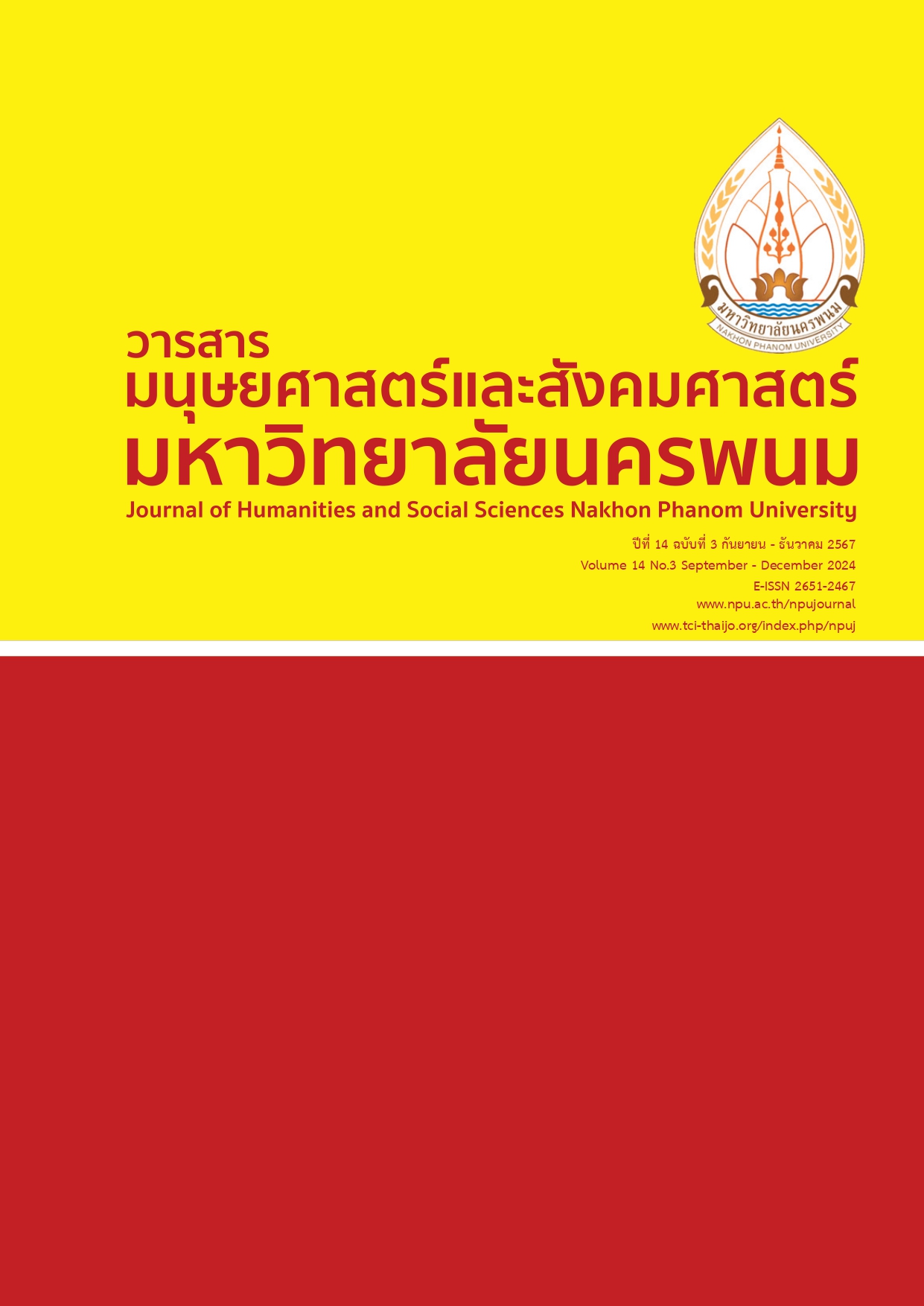The Corporate Identity Development for the Digital Communication Arts Program Nakhon Phanom University through Participatory Action Design
Main Article Content
Abstract
This research aimed to study and analyze stakeholders' needs in creating a corporate identity, to design and create a corporate identity using a participatory action design process, and to evaluate the effectiveness and satisfaction toward the corporate identity for the Digital Communication Arts program, Nakhon Phanom University. The sample consisted of 47 stakeholders, including students, lecturers, alumni, graduate employers, and executives. Research instruments included a semi-structured interview form, a participatory observation form, and a design evaluation form. The findings revealed that 1) the participatory design process led to the creation of a logo and media identity that effectively reflected the program's identity, and the overall mean score of the logo was 4.48 (S.D. = 0.59). 2) The expertise rated the media identity at the overall mean score of 4.57 (S.D. = 0.55) both in aesthetics, appropriateness, and communication effectiveness. However, 3) an opinion on the consistency of the media identity with organizational culture and university context were rated at the lowest overall mean score of 4.20 (S.D. = 0.84).
Article Details

This work is licensed under a Creative Commons Attribution-NonCommercial-NoDerivatives 4.0 International License.
References
Aaker, D. (1996). Building Strong Brands. New York : Free Press.
Best, W. J. (1997). Research in Education. New Jersey : Prentice-Hell, lnc.
Boonyaratavedej, D. (2020). Building a brand with storytelling is not as effective as taking action. Bangkok : Amarin Printing.
Chaisaeng, R. (2012). Corporate communication. Bangkok : University of the Thai Chamber of Commerce.
Euachongprasit, S. (2008). Essentials of employee participation. Bangkok : Samcharoenpanit.
Khemglad, C. & Pangkham, S. (2004). Practical participatory action research. Bangkok : Sematham.
Kiatnakin, S. (2011). @design: Principles of design. Bangkok : Wailai.
Kotler, P. (2003). Marketing insights from A to Z: 80 concepts every manager needs to know. NJ : John Wiley & Sons.
Hall, S. & Du Gay, P. (1996). Questions of cultural identity. London : SAGE.
Li, S. (2019). The corporate identity design of Chinese culture restaurant for Thai teenagers (Unpublished master’s thesis). Burapha University, Chonburi, Thailand
Phuangsomjit. (2014). Participatory Action Research on Research in Educational Administration (Book 2 (Unit 6-10). (3rd ed.). Bangkok : Sukhothai Thammathirat Open University.
Pleumcharoen, W. (2019). Participatory. Bangkok : V.J. Printing.
Ramitannon, C. (2007). Identity, culture, and change. Chiang Mai : Women's Studies Center, Faculty of Social Sciences, Chiang Mai University.
Schmitt, B. & Simonson, A. (1997). Marketing aesthetics: The strategic management of brands, identity, and image. United States of America : Free Press.
Srikalayanabutr, A. (1998). Logo design. Bangkok : Chulalongkorn University.
Srifa, K. (2023). Identity design branding to promote creative tourism based on local cultural ecology in Lad E-Tan Island community, Nakhon Pathom province. Siam Communication Review, 22(2),314-328.
Srisaard, B. (2002). Preliminary research. (7th ed.). Bangkok : Suweeriyasarn.
Tangcharoen, V. (2002). Graphic design. Bangkok : E&I Q.
Theppithak, T. (2015). Graphics for communication. Phitsanulok : Naresuan University.
Viriyayudthama, E. (2019). Communication factors influencing decision making to pursue bachelor's degree under Thai education crisis of private universities (Unpublished master’s thesis). National Institute of Development Administration, Bangkok, Thailand
Worawat, P. & Thanannon, T. (2020). What is corporate identity (CI)? Why is it necessary for creating a brand?. Retrieved August 2023, from https://noria.co.th/th/corporate-identity-ci.


